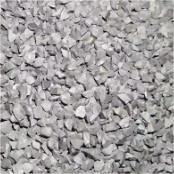**Cupronickel’s Secret Superpower: The Magic Behind Metal Plating**
(How Is Cupornickel Used In Metal Plating)
You know that shiny layer on fancy cutlery or the sleek finish on bathroom fixtures? That’s metal plating. It’s like armor for everyday objects. But how do we make metals tough enough to handle rust, scratches, and time? Meet cupronickel. This copper-nickel alloy is a quiet hero in the plating world. Let’s break down why it’s such a big deal.
First, what’s cupronickel? Mix copper and nickel. The result is a silvery metal that laughs at saltwater, ignores rust, and stays strong under pressure. Ships, coins, and even your grandma’s antique teapot might rely on it. Its superpower? Flexibility. It bonds with other metals easily, making it perfect for plating.
Metal plating is like dipping a cookie in chocolate. You coat a base metal with a thin layer of another metal. This adds protection or makes it look nicer. Cupronickel steps in when you need something tougher than plain nickel or cheaper than solid silver. It’s the Goldilocks of alloys—just right for jobs where balance matters.
Here’s how it works. Take a metal object, maybe steel. Clean it until it’s spotless. Dunk it in a bath filled with cupronickel ions. Zap the bath with electricity. The ions stick to the steel, layer by layer. The result? A steel core wrapped in cupronickel armor. Now it can survive salty ocean air, acidic spills, or years of handling without fading.
Why not use pure copper or nickel? Copper alone is soft. Nickel is pricey. Cupronickel merges their best traits. It’s harder than copper, cheaper than nickel, and resists corrosion better than both. Think of it as a team-up movie where two heroes combine powers.
Ships and submarines love cupronickel plating. Seawater eats metal fast. Coat parts like propellers or pipes with cupronickel, and they last decades. The alloy’s anti-barnacle bonus keeps ships moving smoothly. No surprise navies have used it since the 19th century.
But it’s not just for giants. Jewelry makers use cupronickel plating to give cheap pendants a silver-like shine. Electronics rely on it too. Your phone’s charging port might have a cupronickel layer to stop rust from sweat or humidity. Even coins get a cupronickel makeover. Ever seen a “silver” coin that never tarnishes? Thank this alloy.
The process isn’t perfect. Cupronickel plating needs skill. Too thin, and protection fails. Too thick, and it cracks. Getting the right mix of copper and nickel matters. Mess up the ratio, and the plating flakes off like bad nail polish.
Still, the pros win. Factories save money. Products last longer. Customers get shiny, rust-proof items without paying for solid silver or gold. It’s a win-win hidden in plain sight.
(How Is Cupornickel Used In Metal Plating)
Next time you spot a gleaming faucet or a vintage coin, remember cupronickel. It’s the silent partner keeping metals tough and pretty. No capes, no fanfare—just science doing its job.
Inquiry us
if you want to want to know more, please feel free to contact us. (nanotrun@yahoo.com)


